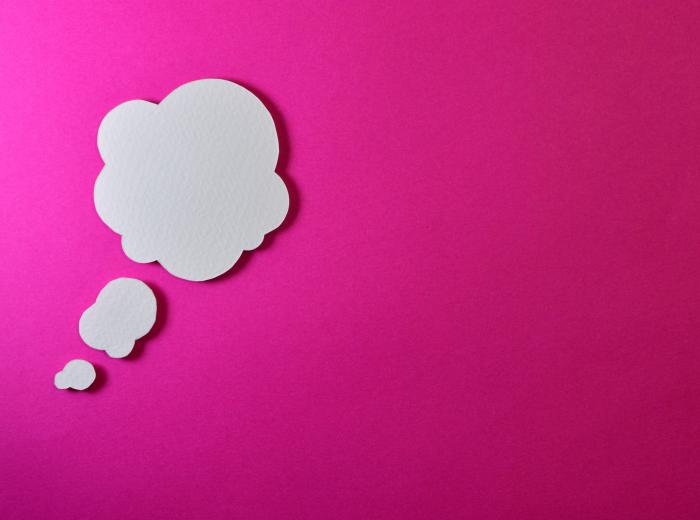In the last post, we talked about how to expose yourself to your fears by using your imagination. As a refresher, the most powerful way people maintain their anxiety is by avoiding whatever it is that makes them anxious.
So, as we discussed in the last post, what is the answer to all of this? Stop avoiding and engage with the situations that make you anxious.
You learned last week how to engage what makes you anxious by using your wild imagination. I hope you had a chance to test this out with a situation in your life that typically makes you feel nervous. Now we will take the next step of engaging what makes you anxious in real-life.
Recall the example of Shayna. Shayna is a writer and feels anxious about anyone reading her work. After she received some negative comments about one of her stories, she started avoiding showing people her stories. Eventually, her anxiety about this grew and she stopped showing her work to anyone, including publishers.
In the last post, Shayna engaged with what makes her feel anxious by using her imagination. She imagined someone reading her story and expressing a negative opinion about it and then allowed herself to sit with that experience. She then practiced taking on a new perspective about the negative comments by accepting that it is unrealistic to expect that everyone will like her work. My hope is that this example helped you to come up with your own scenarios for the exposure exercise we talked about last week.
Now that we have accomplished using our imaginations to confront our fears, it is time to try a real-life exercise.
1. Think back to the situation you used in the first exercise. Mentally run through this scenario again just to have it fresh in your head. Then identify a situation where you can test this out in real-life. A couple of key things to note before you begin this exercise:
- It is important that this exercise is only a small step for you. If you are afraid of public speaking, don’t agree to give a speech at your friend’s big wedding next month. Baby steps. You need to work your way up to the harder stuff. One of the key components of exposure therapy is breaking down the experience of encountering anxiety-provoking situations into manageable steps.
- It is the goal that through this exercise, you will allow yourself to feel the anxiety that it brings. Embrace the anxiety. This will challenge the anxiety’s ability to trick you into thinking you are danger. We want to remove the power that anxious feelings have over you.
Let’s return again to our example. For this real-life exercise, Shayna would call up a friend up and ask her to come over to read a chapter of her latest novel and give her feedback. Because in this exercise it is important to embrace the anxiety, Shayna will invite her friend to give her feedback on ways she could improve her chapter. This will hopefully guarantee that Shayna will get at least some negative feedback because it is important that Shayna has the chance to challenge her fear of criticism.
2. Time to try it out! Now, whatever your circumstance is, really allow yourself to feel the anxiety around that. Sit with it. Let it pass through you. Reframe the experience of feeling anxious as a part of the learning experience. Remember that whatever it is that you are feeling during the situation (anxiety, sadness, embarrassment), they are just feelings. They will pass and they do not define you or the situation. You are safe even if you might be feeling distress over this situation.
Let’s look at the example with Shayna. When Shayna’s friend comes over, she gives her a pen and paper and asks her if she would be willing to jot down some constructive criticism as she is reading her chapter. Her friend agrees, sits down and begins reading. Shayna sits on the other couch across the room and texts with some friends while she waits. As she is texting, she notices her friend writing down notes. Because she specifically asked her to write down constructive criticism, she knows the notes her friend is currently writing are negative to some extent. Lots of feelings begin to emerge for Shayna. She starts to feel anxious as she tries to anticipate what her friend might be writing. She also starts to feel embarrassment about whatever part of the chapter her friend seems to think is flawed. She even starts to feel a little annoyance that friend is writing something negative, despite the fact that she requested her to do so.
Shayna’s natural response might have been to try and escape the situation by telling her friend that she doesn’t need to bother reading her chapter and suggest that they go grab something to eat instead. This would prevent her from having to hear the criticism that she anxiously dreads. But because she is intentionally trying to expose herself to her fears by doing this exercise, she forces herself to sit with the anxiety, embarrassment and annoyance over the situation while her friend reads, takes notes and subsequently shares her constructive criticism with Shayna.
3. Practice accepting the circumstances and corresponding feelings. Use the techniques you used during the imaginal exercise.
Shayna can use this as an opportunity to practice accepting both criticism AND the anxiety that criticism brings her. She should also accept the pluralistic perspective and recognize that different people will see her work in different ways. By accepting criticism as a normal and regular occurrence, she can remove its power over her. Further, by allowing herself to experience the anxiety associated with the criticism instead of trying to avoid it, she can realize what anxiety is and what it is not. It is not indicative of danger. It is not indicative of the future. Anxiety is not anything other than a simple feeling.
4. Repeat this exercise numerous times and in several different situations. Ideally, you can progress to more challenging situations as your anxiety lessons. Exposure doesn’t reduce your anxiety after one experience. It likely took a long time for your anxiety to develop and grow. It will take time to unlearn this way of thinking.
Shayna might try this technique several times with different friends and coworkers. After she notices her anxiety in these situations begins to decrease, she might then progress to the next step. She could submit a chapter or two of her novel to a writing group or submit a piece of work to a publisher.
Now we have seen how you can reduce your anxiety by not avoiding what makes you anxious and, instead, engaging with your fears. First, use your imagination and allow yourself to experience the feelings that come with anxiety-provoking situations. Then, do this same exercise in real-life. If you practice this many times in a variety of different situations, you will notice your anxiety about these situations start to decrease. Exposure is empowering!
This post marks the end of the Reduce Your Anxiety Series. I hope these various techniques help you to begin to develop skills that can limit the role anxiety plays in your life.
A brief note on exposure exercises: Given that you will be doing these exercises on your own and without the guidance of a therapist, I recommend only trying these exercises in situations that give you anxiety that is typically manageable. Do not attempt to try this in situations that bring about severe anxiety for you. If you are interested in trying exposure therapy with a professional, I would be happy to work with you or refer you to another therapist who provides this type of therapy.




